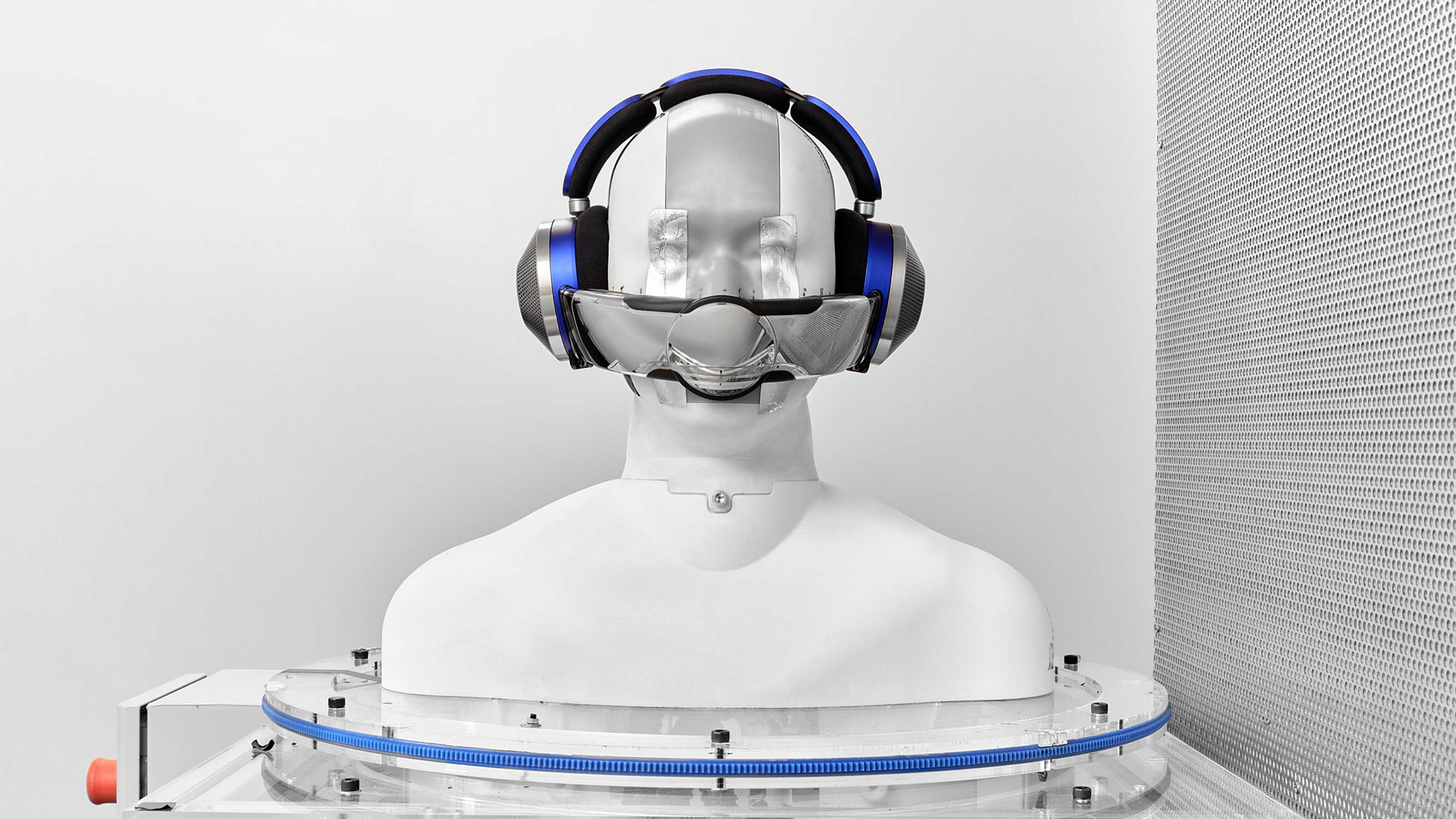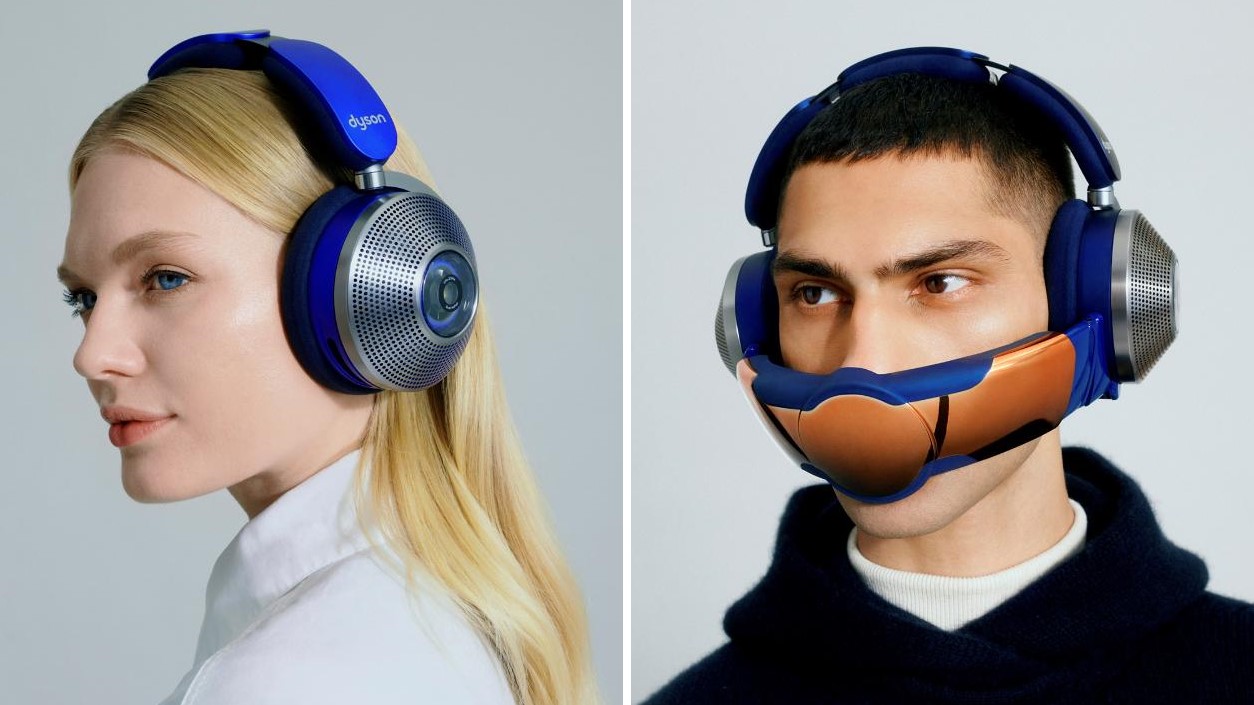Do the Dyson Zone 'air-purifying' headphones have anything going for them?
It’s hard to imagine the Dyson Zone headphones being a breakout hit, but stranger things have happened


Do you worry that your wireless headphones aren’t conspicuous enough? Then Dyson Zone may be for you. The wireless headphones are, after all, certainly eye-catching. They jut out the side of your head like novelty ear warmers before you even attach the magnetic mask for air purification, the product’s main selling point.
Wearable tech is always subject to greater scrutiny than smart home gadgets, and with the Dyson Zone's air purifying mask section, you’ll certainly get curious looks, even if you're just wearing them to answer video calls when working from home. If you want to look like Bane — one of Batman’s less dapper villains — then these are the headphones for you, I guess
That’s not to say that looking weird is necessarily fatal in the unusual world of personal audio. Let’s not forget that AirPods were widely lampooned before they became a ubiquitous fashion symbol.
Few companies have Apple’s innate ability to make unconventional-looking things appear fashionable by sheer force of brand cache, though. And there are other reasons to be wary of spending big on the Dyson Zone, even if you’re comfortable with the high-tech Hannibal Lecter look.
But to play devil’s advocate for a moment, Dyson Zone does have some undeniably clever tech behind it — so let’s explore that a little.

Alan is one of Livingetc's tech experts, with endless experience testing and writing about the latest smart tech. Here, he takes a deep dive into the tech behind Dyson's latest announcement, air-purifying headphones.
Air-purifying headphones - an engineering triumph?

Make no bones about it, as a feat of engineering, Dyson Zone is nothing short of a marvel. A portable air purifier isn’t a trivial problem to get around, and having it attached to your face as part of a working set of headphones is seriously impressive.
Dyson claims that the Zone’s purifier can capture up to 99% of particle pollution down to a size of 0.1 micron. And if you live in a big city, you’ll be pleased to hear that it can block nasties like nitrogen dioxide and sulphur dioxide from entering your lungs. That’s got to be good for your wellbeing, and the attached app will tell you what the air quality is like at any time, so you know when you’ll actually need the mask part — neatly attachable via magnets. It’s worth noting that Dyson makes no claims about airborne viruses, such as Covid-19, but I would have thought this is better than nothing on the subway, all the same.
The Livingetc newsletters are your inside source for what’s shaping interiors now - and what’s next. Discover trend forecasts, smart style ideas, and curated shopping inspiration that brings design to life. Subscribe today and stay ahead of the curve.
Air purifiers are noisy even in a wide open space, so having one close to your ears presents another problem. To that end, Dyson Zone has 11 microphones — eight of them for active noise cancellation, and two extras just to suppress noise from the air purifier.
In short, it’s enormously impressive and Dyson has thoughtfully cleared some very tricky design hurdles. But the compromises required to make it function may just be too deep for most people, no matter how admirable the intent.
The problems aren’t just skin deep

All of that tech is undoubtedly very clever, and Dyson should be applauded for trying something new in an industry where innovation typically only goes as far as “better sound” or “more effective noise cancellation”.
But, to paraphrase Jeff Goldblum’s character in Jurassic Park, just because you can attach a personal air purifier to a pair of headphones, doesn’t mean you should — and there are non-aesthetic reasons to avoid putting your money down immediately.
First up, Dyson is not an established audio brand, and while early previews seem to suggest decent sound, it seems unlikely that these are going to be the audiophile’s choice.
That makes the price tag go from ‘optimistic’ to ‘positively unhinged’. At $949, they’re nearly double the price of Apple’s AirPods Max ($549) — and most people will appreciate that Apple isn’t a company known for its value proposition.
Dyson Zone fares even worse against other reviewer favorites on pricing: the Sony WH-1000XM5 comes in at $399, while the Bose 700 will set you back $379.
Value for money isn’t the only metric that separates the Dyson Zone from these more established headsets. Spot the odd one out:
| Headphones | Weight |
| Apple AirPods Max | 385g |
| Bose 700 | 254g |
| Sony WH-1000XM5 | 250g |
| Dyson Zone | 670g |
Yikes. In Dyson’s (slight) defence, that’s the weight with the air purification mask attached, but even without, it’s still more than double Sony and Bose’s offerings at 595g. I’m skeptical that heft makes for comfortable long-term wear, and its unlikely you're going to choose them as your workout headphones of choice, unless you're banking on their use as a weight training aide.
Perhaps this lack of comfort isn’t such a big deal after all, though, because you may not find the battery lasts long enough to notice.
Despite packing a 2,600mAh battery (that’s only 679mAh less than an iPhone 14), if you want the air purifier running while you listen to music, you’re only going to get four hours’ playback — and that’s with the fans set to low. It drops to 90 minutes if you have the fans on full whack, something which will also be noisier, obviously.
True, you can get a massive 50 hours of music playback if you ditch the mask, but if you’re going to do that, then you may as well opt for something cheaper, right?
My early verdict? Dyson Zone is a tough sell
I suspect that Dyson Zone is the definition of a noble failure. It appears to be a remarkable piece of engineering that does something seemingly impossible, by combining air purification and headphones into one compact(ish) package.
Unfortunately, all of the obvious problems that will act as buyer-repellent — the price, the look, the weight, the battery life — stem from achieving that seemingly-impossible dream. They’re not unfortunate defects to be ironed out in version 2.0 — they’re necessary compromises to make it work. At least for the time being.
Do people care enough about air purification to suck it up and deal with the drawbacks? I’d be surprised. But with air quality a rising concern for scientists, we may look back at Dyson Zone in 50 years' time and see it as an early glimpse of the future, even if it’s hard to believe in the fashion-conscious here and now.
Dyson Zone will arrive in the USA in March 2023, priced at $949.

Freelance contributor Alan has been writing about tech for over a decade, covering phones, drones and everything in between. Previously Deputy Editor of tech site Alphr, his words are found all over the web and in the occasional magazine too. He often writes for T3 and Tom's Guide. When not weighing up the pros and cons of the latest smartwatch, you'll probably find him tackling his ever-growing games backlog. Or, more likely, playing Spelunky for the millionth time.